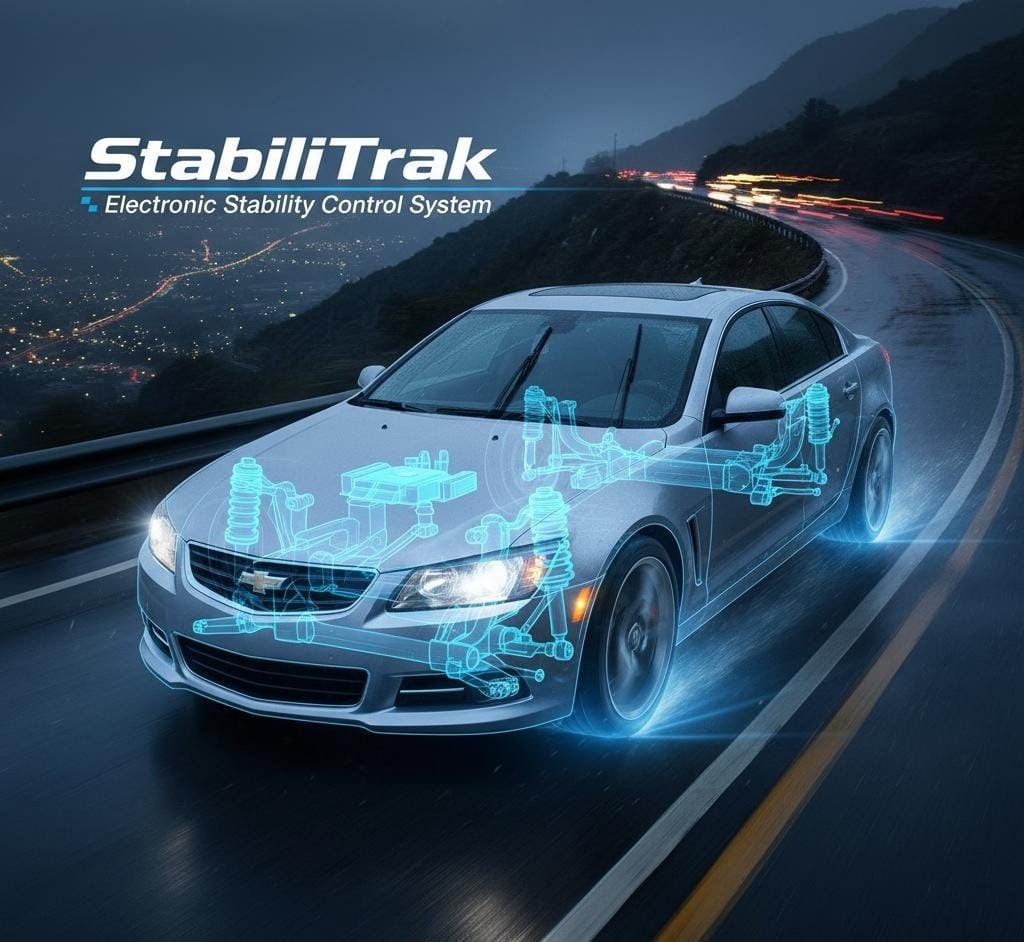StabiliTrak: Stability System Keeps You Safe on the Road
In today’s world, vehicle safety is no longer just about driving skills—it heavily depends on advanced technology that ensures stability, control, and driver confidence. One such innovation is StabiliTrak, General Motors’ proprietary electronic stability control (ESC) system. Installed in many Chevrolet, GMC, Cadillac, and Buick models, StabiliTrak helps drivers maintain control under challenging conditions, from wet roads to sudden evasive maneuvers.
This article will provide an in-depth guide to understanding StabiliTrak, how it works, its benefits, common problems, maintenance tips, and when it might need professional attention.
What Is StabiliTrak?
StabiliTrak is an electronic stability control system designed to keep your vehicle on its intended path. Unlike traditional traction control systems that mainly prevent wheel spin, StabiliTrak actively monitors vehicle dynamics and intervenes whenever it detects that the car is deviating from the driver’s intended course.
It achieves this by integrating multiple systems—traction control, anti-lock brakes (ABS), and sensors that monitor steering and wheel movement—to provide comprehensive stability support.
Key Advantages of StabiliTrak
- Maintains vehicle control in slippery conditions.
- Reduces risk of oversteer, understeer, and spinouts.
- Enhances driver confidence during sudden maneuvers.
- Works seamlessly with other GM safety features.
How StabiliTrak Works
StabiliTrak is more than just a light on your dashboard—it’s a complex system that constantly monitors and corrects your car’s movements. Here’s how it functions:
Sensor Monitoring
- Wheel Speed Sensors: Track tire rotation to detect slipping.
- Steering Angle Sensors: Determine whether the driver’s intended direction matches the car’s movement.
- Yaw Rate Sensors: Measure rotational motion to detect spinning or skidding.
Comparing Driver Intent and Vehicle Motion
The system continuously compares where the driver wants the car to go with where it is actually moving. If it detects deviations, such as the rear wheels sliding out during a turn, StabiliTrak intervenes automatically.
Automatic Interventions
- Brake Application: StabiliTrak applies braking force to individual wheels as needed to stabilize the car.
- Engine Power Reduction: It can reduce engine torque to prevent further wheel slip.
This seamless intervention happens in real-time, often before the driver even notices a problem, providing an invisible safety net during critical driving situations.
Traction Control vs. StabiliTrak
While traction control and StabiliTrak are related, they are not the same:
| Feature | Traction Control | StabiliTrak (ESC) |
|---|---|---|
| Main Function | Prevents wheel spin | Maintains overall vehicle stability |
| Activation | During acceleration | When vehicle deviates from intended path |
| Sensors Used | Wheel speed only | Wheel speed, steering angle, yaw, lateral acceleration |
| Ideal Situation | Slippery starts | Skids, sharp turns, evasive maneuvers |
System Action Reduces engine power or brakes spinning wheels Adjusts engine power and brakes specific wheels
In short, StabiliTrak does more than just prevent slipping—it actively keeps your vehicle on track.
History and Evolution of StabiliTrak
StabiliTrak was first introduced by GM in the late 1990s, representing a significant advance in vehicle safety. Over the years, the system has evolved:
- Integrated with traction control and ABS for a cohesive stability solution.
- Improved sensor technology to respond more quickly to skids.
- Enhanced algorithms for smoother intervention during cornering or slippery conditions.
- Modern versions utilize real-time data from multiple sensors for precise control.
Today, StabiliTrak is standard in most GM vehicles, highlighting its importance as a core safety feature.
Common StabiliTrak Warning Indicators
Drivers may see warning lights such as Service StabiliTrak or StabiliTrak Off on the dashboard. These indicate potential problems with the system and should not be ignored.
Common Causes Include
- Faulty Sensors: Malfunctioning wheel speed or yaw sensors.
- Brake System Issues: Problems with ABS or brake pressure sensors.
- Electrical Problems: Damaged wiring or low battery voltage.
- Environmental Factors: Mud, ice, or debris interfering with sensors.
Addressing these issues promptly ensures that StabiliTrak remains effective when needed most.
Diagnosing and Fixing StabiliTrak Issues
If you encounter a warning, several steps can help identify or resolve the problem:
Restart the Vehicle: Sometimes, a simple reboot clears temporary glitches.
Check Battery Health: Low voltage can trigger false alerts.
Inspect and Clean Sensors: Remove mud, ice, or corrosion.
Professional Diagnostics: A certified mechanic can use specialized scanners to identify faults in the system.
Repair Costs
- Sensor replacement: $100–$400 per sensor.
- Brake system repair: $150–$500.
- Software updates or recalibration: $50–$200.
- Complex electrical repairs: $300–$800.
When Should You Turn StabiliTrak Off?
Although generally advised to remain on, there are specific scenarios where temporarily turning StabiliTrak off is beneficial:
- Off-Road Driving: Allows wheel slip needed for traction on sand, mud, or gravel.
- Track Performance: Skilled drivers may want full control for precise maneuvers.
Important Note: Turning off StabiliTrak reduces safety features, particularly on slippery roads. Drivers should be cautious and understand the risks before deactivating the system.
Maintenance Tips for Optimal StabiliTrak Performance
Maintaining StabiliTrak is straightforward but essential for safety:
- Keep sensors clean from mud, ice, or debris.
- Regularly check wiring and connections.
- Ensure battery health is optimal.
- Perform routine brake and wheel maintenance.
- Use diagnostic tools to monitor system health and update software as recommended.
Proper maintenance ensures the system responds accurately when you need it most.
Safety Benefits of StabiliTrak
The advantages of having StabiliTrak include:
- Enhanced Control: Corrects oversteer and understeer effectively.
- Skid Prevention: Helps prevent spinouts and rollovers.
- Driver Confidence: Provides peace of mind in challenging conditions.
- Accident Reduction: Proven to significantly lower crash risk for cars and SUVs.
By constantly monitoring and correcting vehicle behavior, StabiliTrak plays a critical role in reducing accidents and improving road safety.
Conclusion
StabiliTrak is an indispensable safety feature in modern GM vehicles. By integrating traction control, ABS, and real-time sensor data, it helps drivers maintain control during adverse conditions. Whether it’s preventing oversteer on a sharp turn or stabilizing the vehicle on wet roads, StabiliTrak works silently in the background to ensure safety.
Regular maintenance, timely diagnostics, and understanding how StabiliTrak functions can save lives, prevent accidents, and reduce repair costs. For GM vehicle owners, this system is more than a feature—it’s a trustworthy safety companion that enhances confidence behind the wheel.
By fully understanding and respecting StabiliTrak, drivers can confidently navigate highways, city streets, and off-road adventures, knowing that cutting-edge technology is actively helping maintain control and safety at all times.






